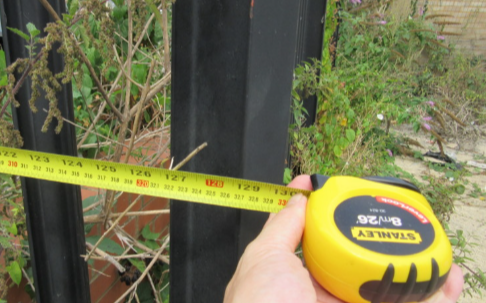Mesh Chairs: The Unsung Heroes of Modern Office Design
In the ever-evolving world of office ergonomics, there’s one product that often gets overlooked in favour of more flashy innovations like standing desks and smart lighting: the humble mesh chair. Yet, for professionals who spend hours seated at their desks, the right chair isn’t just a piece of furniture—it’s an essential tool for productivity, comfort, and long-term well-being.
As we move into 2025, mesh chairs are quietly revolutionising workspaces across Australia, from bustling corporate offices in Melbourne’s CBD to creative studios in Sydney’s Surry Hills. With the rise of hybrid work models, where employees split time between home and office, the demand for seating that supports all-day use without causing strain has never been higher.
Mesh chairs, characterised by their breathable fabric backs and seats, have surged in popularity in Australian offices, co-working spaces, and remote home setups—and for good reason. Unlike traditional upholstered chairs that can trap heat and encourage slouching, mesh seating offers a breathable and supportive design that adapts to your body, providing sustained comfort throughout the workday.
According to a 2023 study by Safe Work Australia, over 55% of workplace injuries in Australia are related to musculoskeletal disorders (MSDs), many stemming from poor seating. Mesh chairs address this head-on, making them a smart choice for businesses aiming to reduce absenteeism and boost employee satisfaction.
Why Mesh Chairs Are a Game-Changer
The appeal of mesh chairs lies in their unique combination of form and function. At the core is superior ventilation: the open weave allows air to circulate, keeping users cool and dry—especially vital in warmer climates or unairconditioned spaces common in older Australian buildings. This breathability prevents the discomfort of sweating or sticking to the chair, which can be a distraction during long meetings or focused tasks.
Another standout feature is postural support. Many mesh chairs come equipped with ergonomically contoured backs, adjustable lumbar supports, and tilt mechanisms that encourage proper alignment. Research from the Journal of Ergonomics (Burgess-Limerick et al., 2019) shows that chairs with dynamic support can reduce back pain by up to 25% by allowing natural movement while maintaining spinal alignment. In an Australian context, where workers log an average of 38 hours per week (ABS, 2024), this translates to fewer health complaints and higher retention rates.
Aesthetically, mesh chairs offer lightweight and minimalist designs that fit seamlessly into contemporary office schemes. Their sleek frames and neutral tones complement industrial lofts in Fitzroy or modern high-rises in Docklands, making them versatile for various settings. Moreover, mesh materials are highly durable and low-maintenance—resistant to wear, easy to clean, and less prone to sagging over time compared to foam-padded alternatives.
Beyond individual comfort, mesh chairs contribute to overall workspace efficiency. By promoting better posture and reducing fatigue, they help employees maintain focus, leading to productivity gains of up to 15% in task-oriented roles (Sommerich et al., 2017). For Australian businesses facing rising operational costs, this is a compelling ROI—fewer sick days mean lower absenteeism, estimated at $24 billion annually nationwide (Safe Work Australia, 2021).
Aligning with Modern Design Trends
Mesh chairs are perfectly suited to the design trends shaping Australian offices in 2025. As companies prioritise sustainability, mesh seating often incorporates recycled materials and eco-friendly manufacturing processes, aligning with Green Star ratings sought by many Melbourne and Sydney firms. The open, airy structure also supports biophilic design principles—incorporating natural elements like plants and light—which are increasingly popular for improving mental health in urban environments.
Aesthetically, mesh chairs provide transparency that opens up visual space in smaller rooms, making them ideal for compact home offices or co-working hubs in Brisbane’s Fortitude Valley. Their neutral tones and sleek lines pair well with Scandinavian-inspired interiors or industrial styles, common in Australian workspaces. Designers note that mesh chairs can blend into minimalist palettes, allowing bolder elements like colourful accent walls or statement lighting to take centre stage.
For education and healthcare settings, where durability is key, mesh chairs offer a practical solution. In schools, they support active learning environments, while in clinics, their easy-to-clean surfaces meet hygiene standards. As hybrid work blurs the lines between home and office, mesh chairs provide the adaptability needed for spaces that serve multiple purposes.
Choosing the Right Chair for Different Spaces
Not all mesh chairs are built the same, and selecting the right one depends on the intended use. Here’s a guide to help Australian buyers make informed choices:
✅ Boardrooms & Executive Zones:
Choose mesh chairs with high backs and polished aluminium frames for a premium look. Models with adjustable headrests and armrests are ideal for long meetings, ensuring executives stay comfortable without compromising on style. In Melbourne’s corporate sector, these chairs often feature in fitouts for firms like PwC or NAB.
✅ Workstations & Hot Desks:
Go for mid-back options with synchro tilt and synchro mechanisms that automatically adjust to the user’s movement. These are perfect for shared spaces in co-working hubs like WeWork Sydney, where users need quick adaptability. Look for chairs with AS/NZS 4442 certification to ensure safety and durability.
✅ Education & Library Spaces:
Opt for task mesh chairs with fixed arms and stackable designs for easy storage. In Australian schools and universities, these chairs support collaborative learning, with breathable mesh preventing discomfort during long study sessions. Reinforced frames are essential for high-traffic areas like TAFE labs in Brisbane.
When evaluating options, consider factors like:
- Weight capacity (up to 150kg for standard models),
- Adjustability (height, tilt, arms),
- Warranty (5–10 years for quality brands).
Testing in person, if possible, is recommended to ensure the chair fits the user’s body type and work style.
Practical Fitout Tip: Focus on Ergonomic Layering
Furniture alone doesn’t create an ergonomic workspace—it’s how the entire environment interacts. When specifying mesh chairs for a commercial office or learning environment, consider integrating:
- Adjustable desks to allow for sit-stand transitions.
- Footrests for users with shorter legs.
- Monitor arms to position screens at eye level.
- Task lighting to reduce eye fatigue.
This layered approach maximises health benefits and creates a truly agile and future-proof space. In Australian fitouts, where space is often premium, these integrations help optimise layouts without sacrificing comfort.
To complement your mesh chair setup, consider adding a sit and stand desk riser to enable posture variation throughout the day and support healthier desk habits.
How Fitouts Are Evolving in 2025
Australian office and institutional fitouts are shifting rapidly. Post-pandemic design priorities include:
- Hybrid-ready furniture that supports remote and in-person work.
- Health and wellness support, with a focus on mental and physical ergonomics.
- Sustainability and low-VOC materials to meet Green Building Council standards.
Furniture suppliers like Office Furniture Designs are leading the charge, offering ergonomic solutions for commercial, education, and medical environments Australia-wide. From high-performance seating to acoustic solutions and whiteboards, they help create cohesive spaces that blend productivity with comfort.
To fully optimise your workspace, it’s also worth exploring mesh chairs that are engineered for specific sectors—explore mesh chairs tailored for education, healthcare, or agile commercial teams to find the perfect fit.
Final Thoughts
Mesh chairs have earned their place as a modern essential—blending comfort, style, and function in a way that few other office products can. Whether you’re refurbishing a creative agency in Melbourne or optimising learning zones in a school in Brisbane, these chairs are a savvy investment in both form and function.
For those navigating large-scale fitouts, look beyond surface aesthetics. Choose mesh seating that aligns with your workforce needs, floor plan limitations, and wellness priorities. Because in 2025, seating isn’t just about sitting. It’s about how we work, collaborate, and feel—every day.






